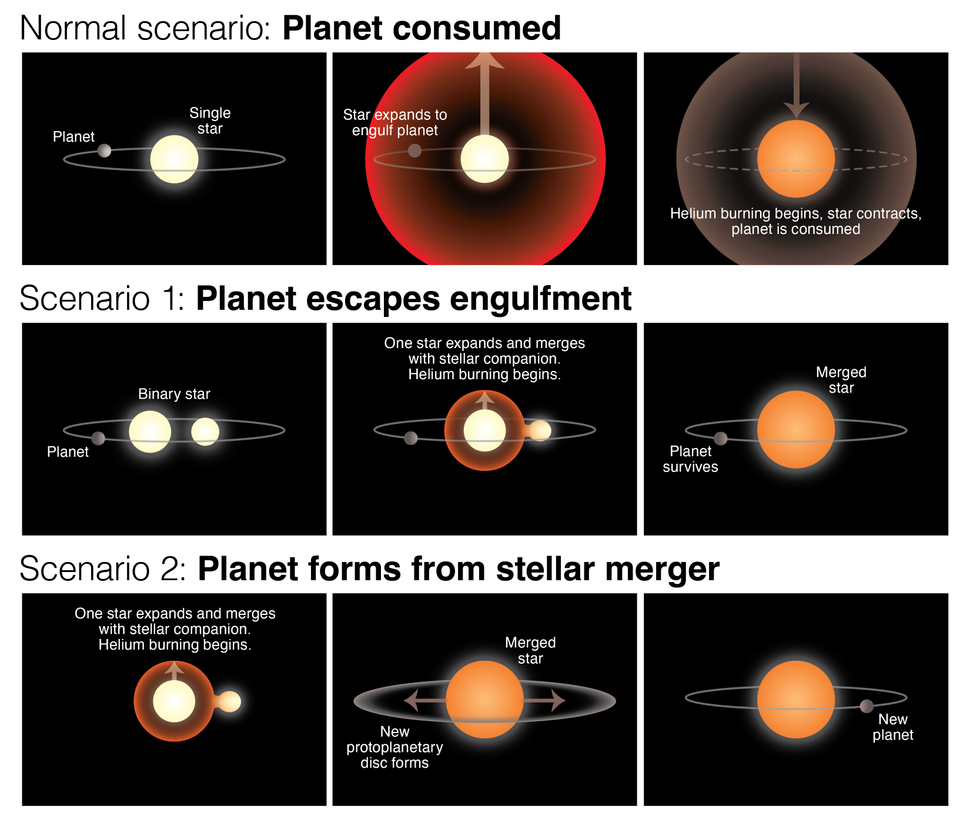Astronomers have discovered Halla, a death defying planet which orbits two stars that are so close together that they are constantly grazing each other. Halla is unusual in that it orbits very close to its star, at a distance of only 0.46 AU (astronomical units). This is about half the distance between the Earth and the Sun. As a result, Halla is exposed to a lot of radiation from its star, and it is thought that it should have been destroyed long ago.
However, it has somehow survived. Scientists believe that this may be because the planet has a thick atmosphere that protects it from radiation. The atmosphere may also be responsible for keeping the planet’s surface cool, as Halla is much cooler than other planets in its orbit.
The planet is located about 1,000 light-years from Earth in the constellation Cygnus. It is a gas giant about the size of Jupiter, but it is much hotter, with surface temperatures reaching up to 1,800 degrees Fahrenheit. The planet’s atmosphere is also very thick and toxic, making it unsuitable for life as we know it.
Despite its harsh environment, Halla has managed to survive for billions of years. Scientists believe that the planet’s survival is due to a combination of factors, including its large size, its orbit around two stars, and its thick atmosphere.
Halla’s large size helps to protect it from the intense heat and radiation from its two stars. The planet’s orbit around two stars also helps to stabilize its climate, preventing it from becoming too hot or too cold. Halla’s thick atmosphere helps to shield it from the harmful effects of the stars’ radiation.
The discovery of Halla is a significant one, as it shows that planets can survive in even the most extreme environments. It also raises the possibility that there may be other planets out there that are even more hostile than Halla, but which have also managed to survive.
A Forbidden Planet’s Narrow Escape:
From the depths of space, Halla emerges as a symbol of resilience and adaptability. This gargantuan exoplanet, boasting a mass 1.7 times that of Jupiter, stepped into the limelight courtesy of NASA’s Transiting Exoplanet Survey Satellite (TESS). Through meticulous observations spanning three years, from 2019 to 2022, scientists detected subtle gravitational tugs—telltale signs of Halla’s presence—emanating from its intricate orbital relationship with the red giant star, Baekdu. Yet, the true marvel lies not merely in the discovery of Halla’s existence but in its ability to thrive in an orbit perilously close to its aging stellar companion.
ALSO READ: Mars Mysterious Spin Acceleration Leaves Scientists Baffled
A Testimony to Survival:
The fate of planets orbiting stars entering their red giant phase has long been shrouded in uncertainty. Commonly held belief dictated that these celestial bodies were destined to be consumed by the fiery expansion of their parent stars. Yet, Halla’s defiance against such expectations stands as a resounding testament to the resilience of cosmic systems. Baekdu, currently ablaze in its core-helium-burning phase, has expanded its outer layers to a distance exceeding 1.5 times Halla’s orbital path. Against all odds, Halla remains a cosmic survivor.
Unveiling the Survival Mechanisms:
Within the realm of scientific inquiry, a tapestry of theories has unfurled, each thread contributing to the narrative of Halla’s survival against cosmic odds. One intriguing theory delves into the concept of a cosmic waltz—a transformative interaction between Baekdu and a binary white dwarf companion—that altered the trajectory of the star and safeguarded Halla from the abyss of engulfment. Another hypothesis, equally captivating, suggests that Halla’s origins can be traced back to the aftermath of a stellar collision—a cataclysmic event that ignited a celestial ballet, leading to the formation of the steadfast planet we contemplate today.
Implications for Planetary Survival:
Halla’s discovery reverberates far beyond the realm of astronomical academia, offering a challenge to established knowledge and an invitation to delve deeper into the mysteries of the cosmos. The harmonious collaboration between space-based and ground-based telescopes has unveiled a gateway to comprehending the intricate dynamics between red giants and their planetary companions. This symphony of observation and analysis sheds light on the intricate relationships that underpin the cosmic fabric.
A Window into the Future:
As our Sun inevitably inches closer to its transformation into a red giant, the significance of studying celestial systems akin to Baekdu and Halla gains unprecedented importance. These cosmic chronicles provide us with a unique lens through which to peer into the potential fate of our own solar system’s planets as they traverse their cosmic journey. Halla’s narrative becomes a mirror reflecting the destiny of our neighboring worlds as our Sun embarks on its transformative odyssey.
Conclusion:
Halla’s journey through the cosmos stands as an emblem of the universe’s propensity for the extraordinary. Its close association with the red giant star Baekdu challenges long-held assumptions and underscores the enduring tenacity ingrained within planetary systems. This revelation beckons us to embark on a voyage of cosmic exploration, inviting us to embrace the mysteries that lie beyond our current understanding. As astronomers, philosophers, and seekers of knowledge, we stand on the precipice of boundless discovery, poised to unravel the enigmas that have woven Halla’s name into the tapestry of cosmic marvels. Documented within the esteemed pages of the journal Nature, this discovery calls us to continue our exploration with open hearts and inquisitive minds, to engage with the cosmos with renewed wonderment, and to relish the infinite mysteries that beckon us toward deeper insights and revelations.
The research is published in the June 28 edition of the journal Nature.
References:
Hon, M., Huber, D., Rui, N.Z. et al. A close-in giant planet escapes engulfment by its star. Nature 618, 917–920 (2023). DOI: 10.

